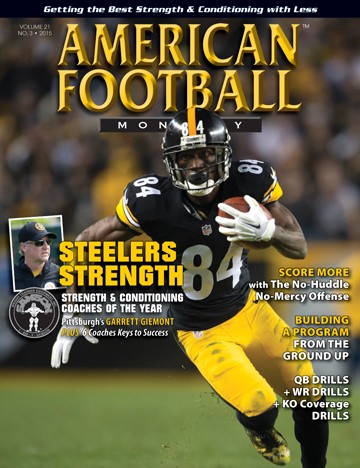AMERICAN FOOTBALL MONTHLY THE #1 RESOURCE FOR FOOTBALL COACHES
|
|
Article Categories
|
 Winning the Key Ground with Kickoff Coverage - Each man in kickoff coverage has an assignment ... Winning the Key Ground with Kickoff Coverage - Each man in kickoff coverage has an assignment ...
by: Mike MendenhallSpecial Teams Coordinator, North Carolina Central University© More from this issueEach man in kickoff coverage has an assignment along with a kicker who must be skilled in directional kicking. This is a game of field position and we talk a lot about “Winning the Key Ground.” Below is our philosophy and goals for our kickoff cover unit.
Philosophy
1. Cover two-thirds of the field with directional kicks.
2. Inside and in front coverage – not lane.
3. Win with speed and tackling.
4. Identify keys to opponents’ returns.
Goals
1. 100% of all balls kicked in target zone.
2. Opponent average less than 20 yards per return.
3. Pin opponent inside the 20-yard line.
4. F....The full article can only be seen by subscribers.
Subscribe today!

|
|
|
NOT A SUBSCRIBER?
Subscribe
now to start receiving our monthly magazine PLUS get INSTANT
unlimited access to over 4000 pages of 100 percent football coaching
information, ONLY available at AmericanFootballMonthly.com!
|
|
|
HOME
|
MAGAZINE
|
SUBSCRIBE
|
ONLINE COLUMNISTS
|
COACHING VIDEOS
|
Copyright 2025, AmericanFootballMonthly.com
All Rights Reserved






